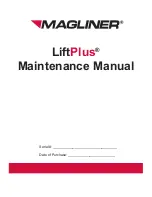
Operation
Starting the Engine
53
53
9811/5700-7
Starting the Engine
Note:
Control and switch locations are provided within this
publication.
K
Cab Layout (
T
32)
.
1
Read and comply with
Before Starting The Engine
.
2
Put the Forward, Reverse lever in neutral.
The engine will not start unless the forward, reverse
lever is in neutral.
3
Put the gear lever in neutral.
4
The battery isolator key must be fitted and switch on
before attempting to start the engine.
!M
WARNING
Exhaust Gases
Breathing the machine exhaust gases can harm and
possibly kill you. Do not operate the machine in closed
spaces without making sure there is good ventilation.
If possible, fit an exhaust extension. If you begin to
feel drowsy, stop the machine at once and get into
fresh air.
INT-2-1-10_2
5
Start the engine.
a
Normal engine start.
i
Slightly depress the accelerator pedal
D
.
Note:
If the temperature is above -6°C (21°F), the cold
climate heater warning light will flash momentarily to
indicate the system is functioning correctly.
K
Warning
Lights (
T
42)
.
ii
Turn the starter switch
E
to position
III
and
hold it there until the engine starts.
b
Cold climate engine start, -6°C (21°F)(if fitted).
i
Turn the starter switch
E
to position
I
, the cold
start inlet manifold heater warning light will
come ON.
K
Warning Lights (
T
42)
.
ii
Fully depress the accelerator pedal to the
floor.
iii
When the warning light goes OFF, turn the
starter switch to the 'start' position
III
and hold
it there until the engine starts.
Note:
Do not operate the starter motor for more than 10
seconds without the engine firing. If the engine fires but
does not fully start, do not operate the starter motor for
more than 40 seconds. Let the starter motor cool for at
least two minutes between starts.
6
Release the starter key as soon as the engine starts.
The switch will return to 'IGN' position
I
.
!M
WARNING
Do not use ether or other starting fluids to assist cold
starting. Using these fluids may result in an explosion
causing possible injury and/or damage to the engine.
3-2-1-9
7
Ease off on the accelerator pedal to reduce engine
speed.
8
Once the engine has started, check that all the
warning lights have gone off. Do not race the engine
until the oil pressure low light has gone out.
K
Warning Lights (
T
42)
. Check that the audible
alarm is silent.
Do not operate attachments until the hydraulic oil has
reached its normal working temperature.
Note:
The engine noise and or tone may be louder than
usual when cold. This is normal and is due to the fuel
injection pump being advanced. The engine will become
quieter when the engine reaches normal operating
temperature.
Note:
If any warning lights fail to go off, or come on while
the engine is running, stop the engine as soon as it is safe
to do so.
Note:
New engines do not require a running-in period. The
engine/machine should be used in a normal work cycle
immediately; glazing of the piston cylinder bores resulting
in excessive oil consumption, could occur if the engine is
gently run-in. Under no circumstances should the engine
be allowed to idle for extended periods; (e.g. warming up
without load).
Summary of Contents for RTFL 926
Page 2: ...0 0 9811 5700 Notes...
Page 8: ...Contents vi vi Page No Contents...
Page 10: ...Safety Notices Important Information viii viii 9811 5700 7 Page left intentionally blank...
Page 13: ...Introduction Machine Description 3 3 9811 5700 7 Fig 2...
Page 87: ...Operation Refuelling a Machine 77 77 9811 5700 7 Fig 60...
Page 90: ...Operation Transporting the Machine 80 80 9811 5700 7 298261 2 Fig 63...
Page 125: ...Routine Maintenance Greasing 115 115 9811 5700 7 Rear Axle 14 grease points Fig 77...
Page 180: ...Optional Attachments Work Platforms 170 170 9811 5700 7 Page left intentionally blank...










































